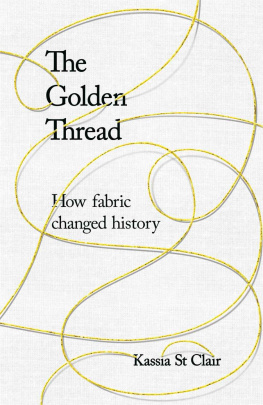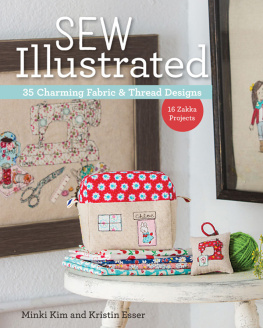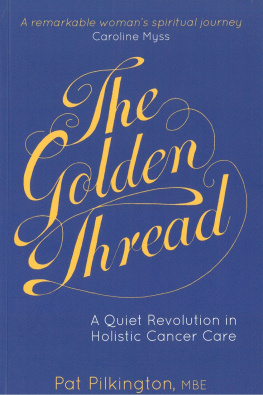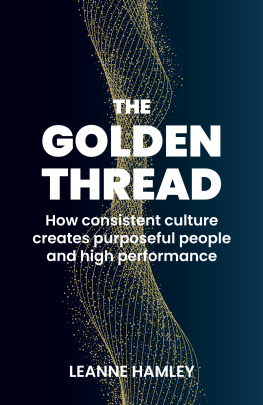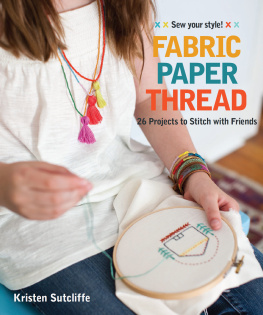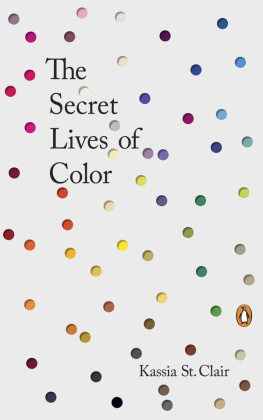Kassia St Clair is a design and culture writer and author. Her first book The Secret Lives of Colour was a Radio 4 Book of the Week. She lives in London.
The Golden Thread
How Fabric Changed History
Kassia St Clair
JOHN MURRAY
www.johnmurray.co.uk
First published in Great Britain in 2018 by John Murray (Publishers)
An Hachette UK company
Copyright Kassia St Clair 2018
The right of Kassia St Clair to be identified as the Author of the
Work has been asserted by her in accordance with the Copyright,
Designs and Patents Act 1988.
All rights reserved. No part of this publication may be reproduced,
stored in a retrieval system, or transmitted, in any form or by any
means without the prior written permission of the publisher.
A CIP catalogue record for this title is available from the British Library
ISBN 978-1-473-65904-9
John Murray (Publishers)
Carmelite House
50 Victoria Embankment
London EC4Y 0DZ
www.johnmurray.co.uk
To my father,
for tenacity and storytelling
Contents














Preface
If you take your eyes off this page and look down, you will see that your body is encased in cloth. (I am assuming here, dear Reader, that you are not naked.) Perhaps you are sitting on the cushioned seat of a railway or metro carriage, or in the bosom of a plump sofa. You may be enrobed in a towel, confined within the colourful enclosure of a tent or enfolded in bedsheets. All are made of cloth, whether woven, felted or knitted.
Fabrics man-made and natural have changed, defined, advanced and shaped the world we live in. From prehistory to the early Middle Eastern and Egyptian civilisations; via the silken dragon robes of Imperial China to the Indian calicoes and chintzes that powered the Industrial Revolution; arriving finally at the lab-blended fibres that have allowed humans to travel further and faster than ever before. For much of recorded history, the four principal sources of natural fibres cotton, silk, linen and wool have borne much of the strain of human ingenuity. They have been pressed into service to give warmth and protection, demarcate status, confer personal decoration and identity and provide an outlet for creative talent and ingenuity.
We live surrounded by cloth. We are swaddled in it at birth and shrouds are drawn over our faces in death. We sleep enclosed by layer upon layer of it like the pea that woke the princess in the fairy tale and, when we wake, we clothe ourselves in yet more of it to face the world and let it know who we shall be that day. When we speak, we use words, phrases and metaphors in which the production of thread and cloth have insinuated themselves. The words line, lining, lingerie and linoleum, for example, are all rooted in the word linen. For most people, who know little of the practical business of turning the stems of flax into thread or conjuring damasks from a skeletal warp on a loom, these linguistic motifs could seem little more than empty shells washed up on a beach: a pallid reminder of something greater, richer, only half understood today, but worth our curiosity.
When I studied eighteenth-century dress at university, I was constantly confronted with the stubborn belief that clothing was frivolous and unworthy of notice, despite its evident importance to the society under discussion. When I went on to write about contemporary design and fashion I encountered similar snobbery. Examination of fabrics is often ghettoised. Even when it is the principal focus of mainstream attention, it is usually the appearance and desirability of the end product being discussed, rather than the constituent raw materials and the people who fashion them.
This book invites you to take a closer look at the fabrics that you surround and clothe yourself with each day. It is not and was never intended to be an exhaustive history of textiles. Instead, The Golden Thread contains thirteen very different stories that help illustrate the vastness of their significance. In one chapter you will be invited behind the scenes to watch the making of the spacesuits that allowed us to walk on the moon. Another looks at the craft that inspired Vermeer to paint The Lacemaker . Elsewhere youll meet the people who wrapped and those who unwrapped Egypts mummies; inventors and scientists who have spent their lives trying to make cloth from spiders silk; and those whose clothes failed them in the most extreme environments on earth with fatal consequences. It is a book written for the curious: I hope you enjoy it.
I give you the end of a golden string;
Only wind it into a ball:
It will lead you in at Heavens gate.
William Blake, Jerusalem, 1815
Introduction
Threads and the Body
The threads the Fates spin are so unchangeable, that even if they decreed to someone a kingdom which at the moment belonged to another, and even if that other slew the man of destiny, to save himself from ever being deprived by him of his throne, nevertheless the dead man would come to life again in order to fulfil the decree of the Fates.
Flavius Philostratus, Life of Apollonius Tyana , third century AD
The ancient Greeks believed human destiny was controlled by the Fates, three mythological sisters who visited every child soon after birth. Clotho, the most powerful, would take her spindle and spin the thread of their life; Lachesis carefully measured its length; and then Atropos would sever it, determining the exact moment of death. No human or god had the power to change their decisions once made. The Romans named their trio the Parcae; and the Norse had the Norns. This ancient story still echoes through the way we think about ourselves and our society. When we talk of lives hanging by a thread, being interwoven or being part of the social fabric; or if we want to help someone in danger of unravelling, or being torn away from their friends or family, we are part of a tradition that stretches back many thousands of years. Fabric and its component parts have long been a figurative stand-in for the very stuff of human life.
Next page
